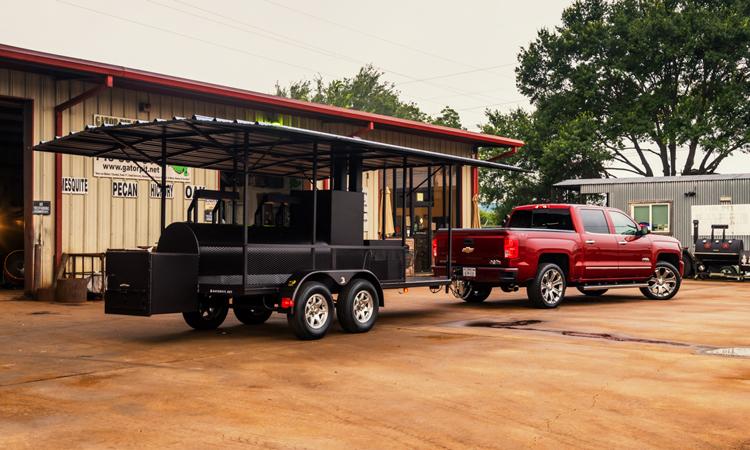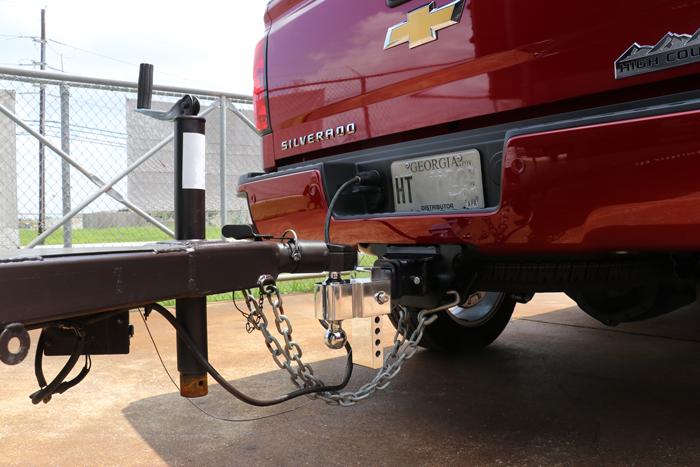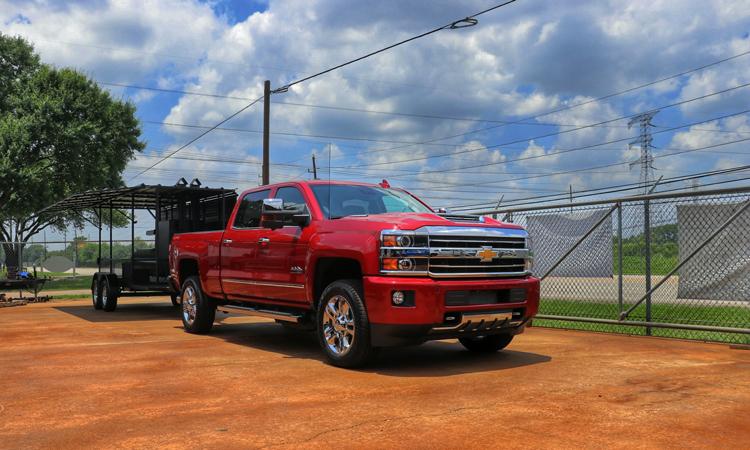General Motors has been a great help to us over the past year as we've explored how to tow properly. What I love about the company is that not only do they make some of the best trucks out there for towing - but across the various brands they are really focused on educating consumers on the proper way to use their trucks (and SUVs) to tow properly. Over that time, we've had the opportunity to explore towing with the Chevy Tahoe Custom, GMC Sierra, and last week with both the Chevy Silverado HD and Colorado. While each vehicle has its own strengths and weaknesses, one challenge for any trip that involves towing is how to prevent trailer sway.
Here's some of what about towing in the Silverado we learned while on a BBQ tour in Texas
What is Trailer Sway?
Sway occurs when side forces induced by air flow cause the trailer to move side to side, effectively destabilizing the vehicle and trailer. Trailer sway is especially problematic when hauling larger loads like campers or in this case, a huge BBQ pit. Trailer sway can put considerable strain on the tow vehicle and, in extreme cases, cause the driver to lose control altogether.
Sway is also often induced by unbalanced loads where weight is distributed unevenly across a trailer. In some instances, that's a matter of loading things evenly but in others - such as the load below, it is more challenging. In this instance, while the weight is even down the middle, the load is susceptible to wind gusts due to the metal awning. Even if sway is minimal, this movement can put considerable wear on a trailer and tires over time. The trailer, which generally encounters more air resistance than the towing vehicle, can pivot substantially on the ball of the trailer hitch, causing the trailer to unexpectedly veer into other lanes of traffic.
In the case of heavy towing loads and extreme weather conditions, trailers can actually pull the towing vehicle off its intended course.

Selecting the Appropriate Vehicle for Your Hauling Needs
Before you begin towing, it is important to examine the towing specifications of your vehicle, which can generally be found in user manuals. Trucks are better suited for hauling larger loads than smaller vehicles like cars or SUVs. Trucks have more pulling power and the truck's weight helps to increase stability and reduce the potential for sway. Selecting the right vehicle for the job at hand will substantially reduce problems encountered in the hauling process. Chevy has tons of great information available online about how to select the right truck. The 2018 Chevy Silverado 2500HD with a Duramax Diesel we had can tow up to 14,500 pounds. Depending on various configurations though, the 2500HD can tow up to 18,000 pounds. That's way more than the BBQ pit in question, so we're good to go.
One critical thing to take into consideration as well is to consider not just max towing capacity but also does the truck have the right suspension as well as other features such as connections for trailer brakes to help control the trailer. Additionally, different engine configurations, cab/box sizes, and even 4x4 vs 2WD can have a significant impact on the max cargo as well as towing capacities.
Using a Quality Towing Hitch and Linkage System
One of the most important factors in controlling trailer sway is installing a durable and well-designed linkage system that provides adequate support the trailer. There are two key considerations when selecting a linkage system for your truck:
- What are you planning on hauling?
- How much weight will the trailer linkage need to support?
Linkage systems come in a variety of sizes and with varying features. Higher end linkage systems, which are capable of supporting more weight, help to better distribute weight across axles and are often designed with improved braking systems.

Taking Care When Connecting Your Trailer
You can help to reduce the possibility of trailer sway by carefully connecting the trailer to your tow vehicle. Many hitching systems come with safety chains, which should be attached carefully and crossed to create a basket incase the coupling comes undone. Also, make sure that brake cables and lights are connected properly and are functioning before you set out on your trip. Also, always make sure that the latch on the hitch itself is closed. An improperly hitched load can cause sway as well as lead to loss of control should sway become a significant issue.
Balancing Your Load
As trailer sway is often caused by imbalances in weight, it is important to ensure that weight is distributed evenly across axles. Avoid packing heavy items on one side of the trailer. As much as possible, try to make sure that weight is distributed evenly on all sides.
Dampening Sway Using Friction
There are many aftermarket devices that aim to decrease or prevent trailer sway using friction. Weight distribution hitches help to distribute the weight of the trailer on all axles to ensure increased traction.
Brake control systems automatically activate trailer brakes when the driver hits the brake pedal inside the vehicle. The Max Trailering package on the Chevy Silverado also features controls that allow the driver to activate trailer brakes apart from vehicle brakes, which may help to stabilize a shifting trailer.
Driving Carefully and Attentively
Even the best laid plans often go awry and you may find your trailer swaying despite your preparations. Try to keep a careful eye on your trailer over the course of your drive. If you notice signs of swaying, the National Highway Traffic Safety Administration recommends the following actions:
- Hold the wheel firm and steady and avoid any sudden movements or over-corrections
- Activate the manual override for your brakes by hand
- Avoid applying the tow vehicle brakes, which may actually contribute to sway
- Reduce acceleration
These steps will help you avoid trailer sway and will help you get to your destination safely.
